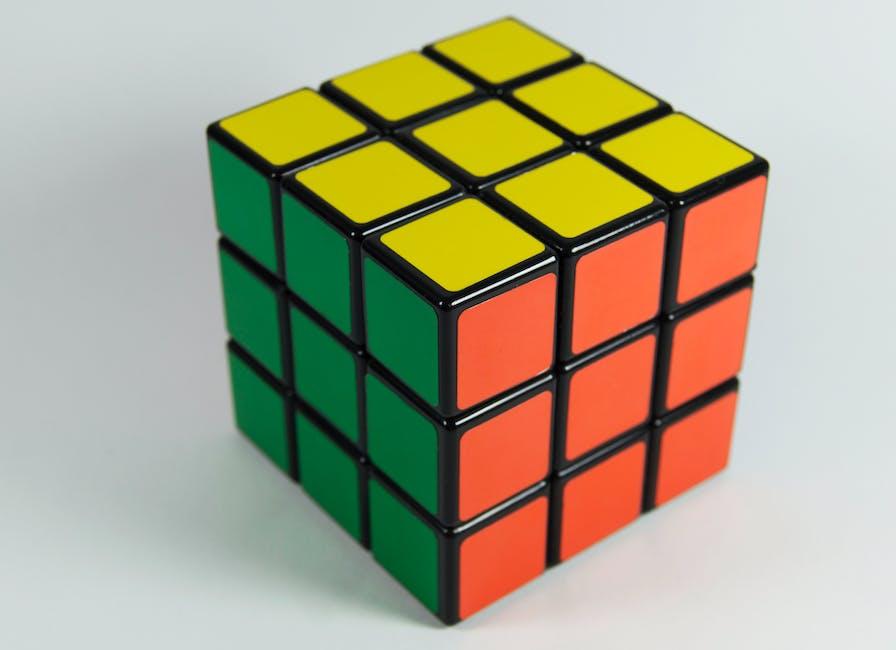How To Turn Chaos Into A Chance For Creativity?
Chaos can be the spark that ignites your most creative ideas. It’s often in the messiest, most unpredictable moments that innovation is born. But how do you turn the whirlwind of disorder into something meaningful? By shifting your mindset, embracing the unknown, and learning to see chaos as a canvas for creativity. Stick around, and we’ll explore how to transform disruption into your secret weapon for growth and ingenuity.
Key Takeaways
- Chaos is a natural part of life and can fuel creativity if approached with the right mindset.
- Reframing disruption as an opportunity can lead to innovative breakthroughs.
- Practical strategies, like storytelling and adaptability, can help you harness chaos effectively.
Understanding Chaos as a Catalyst for Creativity
Defining Chaos and Its Role in Innovation
The inevitability of disruption in life and work
Life doesn’t come with a manual, and neither does creativity. Chaos is inevitable—whether it’s a sudden shift in your career, a global crisis, or even a creative block. These disruptions can feel overwhelming, but they’re also a natural part of growth. Think of chaos as the storm before the rainbow. Without it, the vibrant colors of innovation might never emerge.
Shifting perspectives: Viewing chaos as an opportunity
Instead of seeing chaos as a roadblock, what if you saw it as a detour to something better? Chaos shakes things up, forcing you to think differently. It’s like shaking a snow globe—everything gets jumbled, but the result can be unexpectedly beautiful. By shifting your perspective, you can uncover hidden opportunities in the mess.
The Mindset Shift: Reframing Disruption
Embracing disruption as an invitation to innovate
When chaos strikes, it’s tempting to cling to what’s familiar. But innovation thrives on change. Embrace the disruption as an invitation to experiment. For example, during the pandemic, many businesses pivoted to online models, discovering new ways to connect with customers. Chaos, in this sense, became a catalyst for reinvention.
Overcoming fear and resistance to change
Fear is a natural response to chaos, but it’s also the enemy of creativity. Instead of resisting change, lean into it. Imagine you’re surfing a wave—resistance will only pull you under, but riding the wave can take you to new heights. Mindfulness practices can help you stay grounded and open to possibilities during turbulent times.

Lessons in Harnessing Chaos
Lesson #1: Learning to Pivot
The importance of adaptability during chaotic times
Adaptability is your superpower in chaotic situations. Think of it as being like water—fluid, flexible, and able to fit into any container. When plans fall apart, adaptability allows you to pivot and find new solutions. This skill is especially crucial in creative work, where the ability to adjust can lead to unexpected breakthroughs.
Encouraging teams to experiment and learn
In a team setting, chaos can either divide or unite. Encourage your team to see disruption as a chance to experiment. Create a safe space where failure is seen as a stepping stone rather than a dead end. Cognitive restructuring techniques can help shift mindsets and foster a culture of learning.
Lesson #2: Not All Crises Are Created Equal
Assessing unique challenges of different disruptions
Not all chaos is the same. Some disruptions are minor hiccups, while others are full-blown hurricanes. Take the time to assess the situation. Is this a temporary setback or a long-term challenge? Understanding the nature of the chaos will help you respond more effectively.
Tailoring responses to specific situations
Once you’ve assessed the chaos, tailor your response. For example, a creative block might require brainstorming sessions, while a financial crisis might call for strategic planning. The key is to remain flexible and open to different approaches.
Lesson #3: From Concept to Creation
Turning ideas into actionable plans amidst uncertainty
Chaos often sparks a flood of ideas, but turning those ideas into reality requires focus. Break down your vision into small, actionable steps. This not only makes the process less overwhelming but also builds momentum.
Building momentum through small, achievable steps
Start with what you can control. Achieving small wins can create a ripple effect, boosting confidence and inspiring further action. It’s like building a puzzle—one piece at a time, the bigger picture starts to take shape.

The Role of Storytelling in Navigating Chaos
Storytelling as a Tool for Perspective
Inspiring teams to see the bigger picture
Stories have the power to transform chaos into clarity. By framing challenges as part of a larger narrative, you can inspire your team to see beyond the immediate turmoil. For instance, sharing success stories of others who thrived in chaos can provide a much-needed morale boost.
Using stories to foster courage and risk-taking
Storytelling isn’t just about inspiration—it’s also about empowerment. A well-told story can encourage your team to take risks and embrace the unknown. It’s like giving them a flashlight in a dark room, helping them find their way.
Sekou Andrews’ Poetic Approach
How storytelling can empower leaders and teams
Poet and speaker Sekou Andrews emphasizes the power of storytelling in leadership. By weaving narratives that resonate, leaders can turn chaos into a rallying cry for innovation. Learn more about his approach here.
Creating a shared vision through narrative
A compelling story can unite a team around a common goal. It creates a sense of purpose, turning chaos into a shared journey rather than an individual struggle.

Building a Culture of Creativity and Adaptability
Fostering Agility in Teams
Empowering teams to pivot and experiment
Agility isn’t just about quick thinking—it’s about creating an environment where experimentation is encouraged. Give your team the freedom to try new things, even if it means making mistakes along the way.
Encouraging collaboration and open communication
Chaos can breed confusion, but clear communication can cut through the noise. Foster a culture where ideas flow freely, and everyone feels heard. Collaboration often leads to the best solutions.
Embracing Discomfort as a Growth Opportunity
Viewing challenges as stepping stones to innovation
Discomfort is a sign of growth. Instead of avoiding it, lean into it. Challenges are like weights at the gym—they may feel heavy, but they make you stronger.
Celebrating small wins to build resilience
Resilience isn’t built overnight. Celebrate small victories along the way to keep morale high and momentum going. Each win is a reminder that progress is possible, even in chaos.

Practical Strategies for Turning Chaos into Creativity
Lesson #4: Follow the Flow
Embracing change rather than resisting it
Resistance only prolongs the chaos. Instead, go with the flow. Adapt to the changes around you and look for opportunities within them.
Staying flexible and open to new possibilities
Flexibility is key to turning chaos into creativity. Keep an open mind and be willing to explore paths you hadn’t considered before.
Lesson #5: Knowledge is Power
The importance of gathering information during disruption
In chaotic times, information is your best friend. Gather as much data as you can to make informed decisions. This approach can help you turn uncertainty into clarity.
Using insights to make informed decisions
Once you have the information, use it to guide your actions. Insights can help you identify patterns and opportunities within the chaos.
Courage and Action in the Face of Chaos
Taking calculated risks to drive innovation
Innovation often requires stepping out of your comfort zone. Take calculated risks and trust your instincts. Remember, fortune favors the bold.
Leading by example to inspire others
As a leader, your actions set the tone. Show your team that chaos isn’t something to fear—it’s something to embrace. Your courage can inspire others to do the same.
httpv://www.youtube.com/watch?v=D1–WC5IOj4
Transforming Organizations Through Creativity
Harnessing Disruption for Organizational Growth
Turning adversity into a competitive advantage
Organizations that thrive in chaos don’t just survive—they innovate. Use disruption as an opportunity to rethink strategies and gain a competitive edge.
Building a resilient and innovative company culture
Resilience and creativity go hand in hand. Foster a culture that values adaptability and innovation, and your organization will be better equipped to handle future challenges.
Long-Term Benefits of Embracing Chaos
Strengthening adaptability for future challenges
The more you practice turning chaos into creativity, the better you’ll get at it. Over time, you’ll build a muscle for adaptability that will serve you well in any situation.
Creating a legacy of creativity and innovation
By embracing chaos, you’re not just solving today’s problems—you’re laying the foundation for a future of endless possibilities. That’s a legacy worth striving for.
Chaos isn’t the enemy of creativity—it’s the fuel. By shifting your mindset, embracing disruption, and applying practical strategies, you can turn even the most chaotic moments into opportunities for growth and innovation. Ready to dive deeper into the creative process? Check out this guide for more tips on unlocking your creative potential.
FAQ: Transforming Chaos into Creativity – Your Guide to Turning Turmoil into Triumph
What does it mean to turn chaos into creativity?
Turning chaos into creativity involves using disorder or challenges as a catalyst for innovative thinking and problem-solving. It’s about finding opportunities within uncertainty to create something meaningful or new.
Why is chaos often linked to creativity?
Chaos disrupts routine and forces us to think outside the box. When the usual methods fail, we are compelled to explore unconventional ideas, which can lead to creative breakthroughs.
What are the first steps to harness creativity during chaotic times?
Start by embracing the chaos rather than resisting it. Reflect on the situation, identify opportunities within the disorder, and set small, actionable goals to channel your energy productively.
How can I stay focused when chaos feels overwhelming?
Break tasks into manageable steps and prioritize them. Practice mindfulness or meditation to calm your mind, and remind yourself that chaos is temporary and can lead to growth if approached positively.
Can chaos really improve problem-solving skills?
Yes, chaos forces you to adapt and think creatively. It challenges you to find solutions in unconventional ways, which can sharpen your problem-solving abilities over time.
Are there specific techniques to foster creativity in chaotic situations?
Techniques like brainstorming, mind mapping, or journaling can help organize thoughts and spark ideas. Collaboration with others can also bring fresh perspectives to chaotic situations.
What role does mindset play in turning chaos into creativity?
A growth mindset is crucial. Viewing chaos as an opportunity rather than a setback allows you to approach challenges with curiosity and resilience, which are essential for creativity.
How can I maintain creativity when chaos subsides?
Continue to challenge yourself with new experiences and embrace uncertainty as a part of life. Reflect on what you learned during chaotic times and apply those lessons to future creative endeavors.
Can turning chaos into creativity benefit teams or organizations?
Absolutely. Teams that embrace chaos as a chance for innovation can foster collaboration, adaptability, and resilience, leading to stronger problem-solving and creative outputs in the long run.
What are some real-life examples of turning chaos into creativity?
Many groundbreaking inventions and artistic works have emerged from chaotic times. For instance, the invention of the Post-it Note was a result of a failed adhesive experiment, and many artists have created masterpieces during periods of personal or societal upheaval.



